When cultivating a complex plant like cannabis, it’s best to know all of its working parts. Understanding the basics of cannabis plant anatomy can help you better identify issues, and nurture its health. In doing so, you can maximize growth overall, and most importantly, yields too. That’s why we’ve put together a simple guide to the autonomy of cannabis plants for you to learn more.
- Male vs. Female Cannabis Plants
- The different parts of a cannabis plant
- How Cannabis Leaves Absorb Energy from the Sun
- How Roots and Stems Deliver Nutrients to the Flowers and Leaves
- How the Cannabis Stem Works to Support Your Plants
- How Trichomes and Cannabinoids Are Created and Stored
- How a Cannabis Plant Produces and Stores Terpenes
Male vs. Female Cannabis Plants

The first thing every grower needs to know about cannabis anatomy relates to gender. If you didn’t know by now, cannabis plants are dioecious, meaning they can be of both sexes, male or female. For crops and buds rich in THC, like those you’re familiar with - the plant must be female. Female cannabis plants produce higher levels of cannabinoids. Male cannabis plants produce much lower levels and pollen sacs that can contain seeds.
The different parts of a cannabis plant
Beyond gender differences, the unique parts of a cannabis plant are just as important to know. Here’s a brief breakdown of the anatomy of a marijuana plant, and the key traits of each.
Cotyledons
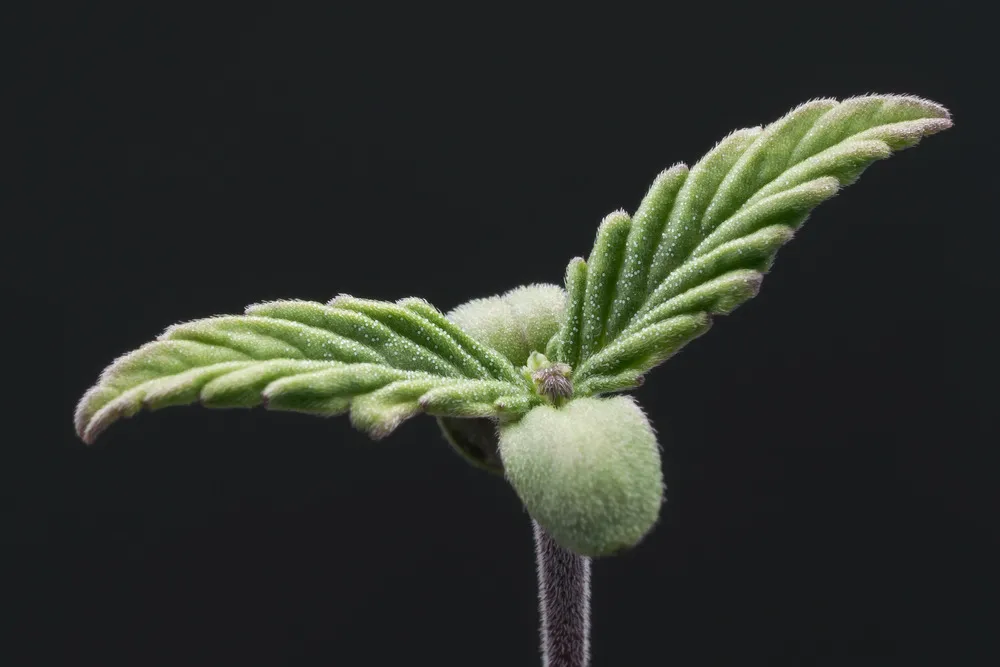
At the earliest stage of the cannabis plant's life, the first signs of growth come in the form of cotyledons. These are the small, serrated pairs of leaves that emerge from a newly germinated seed. Cotyledons contain chlorophyll, allowing them to conduct photosynthesis, which is critical for early energy absorption. They don’t resemble the fan leaves that will develop later, but their role is foundational, supporting the plant's initial growth by absorbing light and nutrients until the plant can produce more complex leaves.
Roots
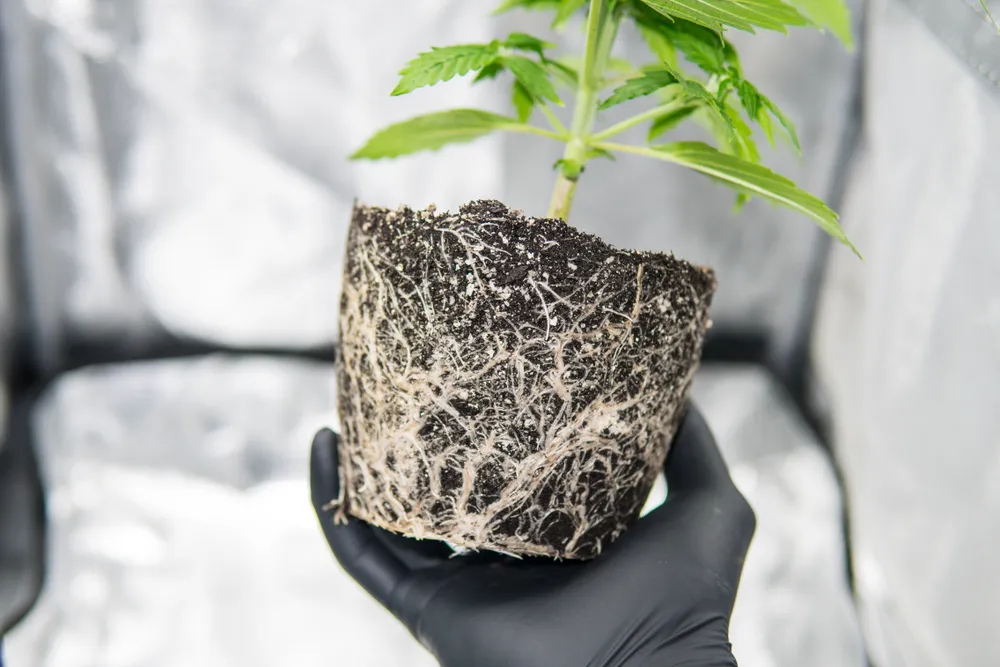
Once a seed has germinated, the root system begins to form. The roots are arguably one of the most important parts of the cannabis plant, as they anchor it in place and absorb water, nutrients, and oxygen from the soil or growing medium. The initial root, known as the taproot, extends downward, anchoring the plant and forming the foundation for the root network. The healthier the roots, the more efficiently the plant can absorb nutrients and thrive.
Stems & Branches
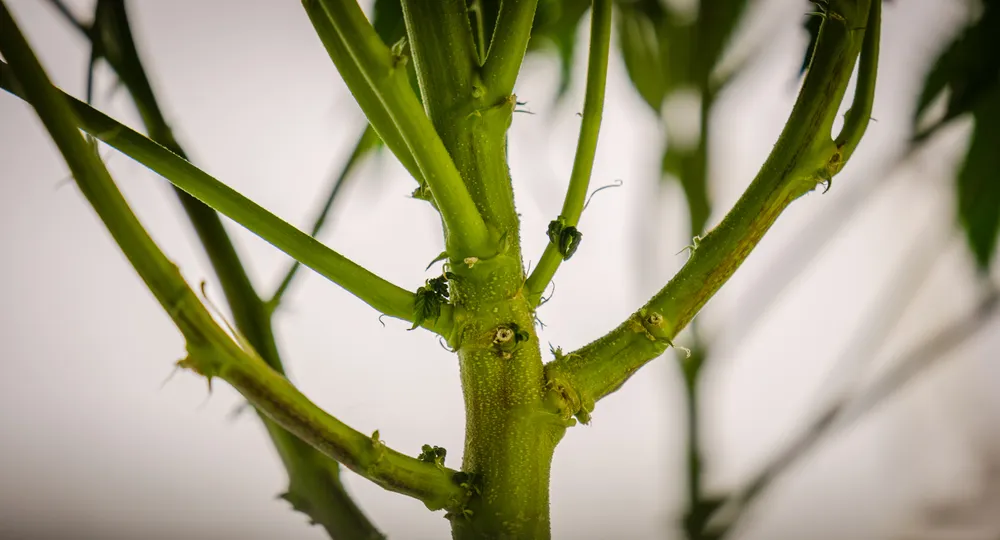
The main stem, or stalk, is the support structure that allows the cannabis plant to grow upward. Stems and branches provide the framework for the plant, supporting its leaves, buds, and flowers. Within the stems and branches, a specialized tissue known as xylem helps transport water and nutrients from the roots to other parts of the plant. The stems not only provide structural support but are also essential conduits for transporting the vital resources the plant needs to grow and flourish.
Stems are not typically smoked as they don’t contain significant levels of cannabinoids. However, instead of being discarded, cannabis stems can be repurposed with a number of uses. For example, they can be used for making teas, infused oils, or even turned into fiber for making rope or paper or even composting to enrich soil for your next grow.
Nodes & Internodes
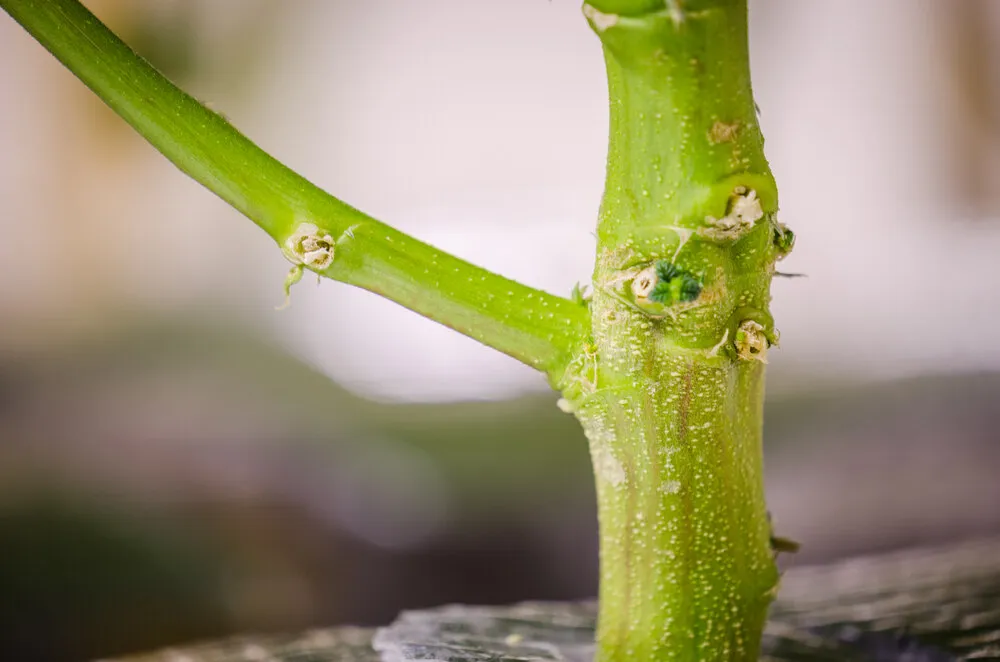
Nodes are the critical points on the plant where branches, leaves, or flowers originate. A node is essentially a junction where new growth occurs, and it's also the place where you can observe early signs of the plant's gender—either male or female reproductive organs will emerge here. The internodes are the spaces between two nodes. The length of the internodal spacing can offer clues about how tall or short a cannabis plant will grow, with more spacing generally leading to taller plants.
Fan Leaves
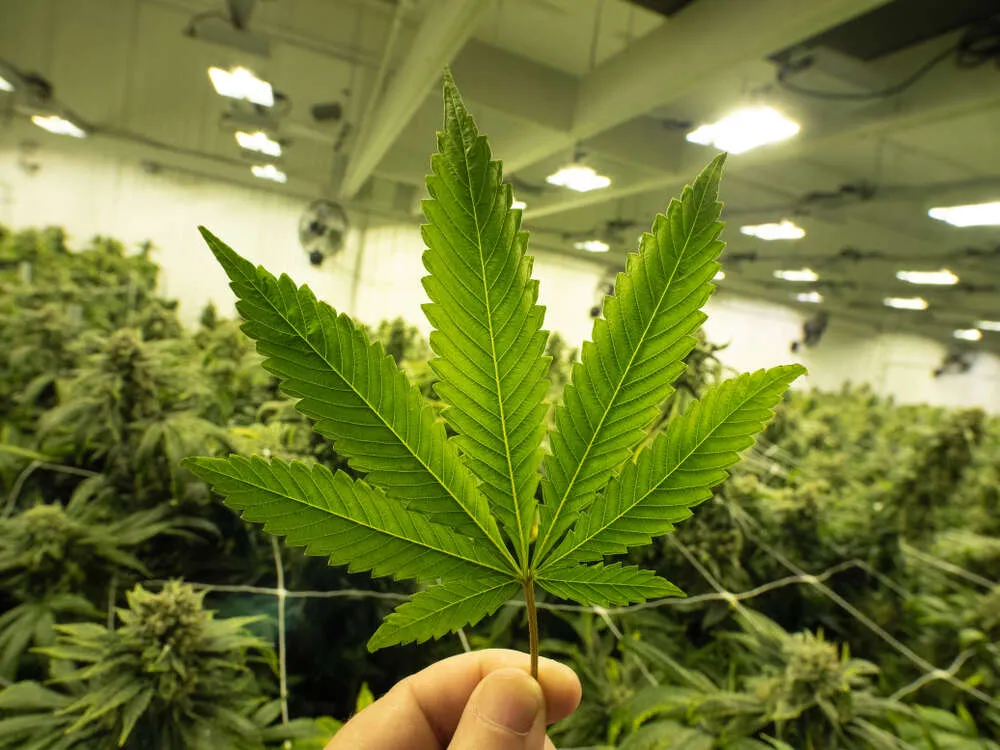
The fan leaves are one of the most iconic features of the cannabis plant and are crucial for photosynthesis. These large, finger-like leaves absorb sunlight or artificial light, converting it into energy through the process of photosynthesis. This energy fuels the plant’s growth and development. In addition to absorbing light, fan leaves help the plant breathe through small pores known as stomata, which are essential for gas exchange, allowing the plant to take in carbon dioxide and release oxygen.
Calyxes
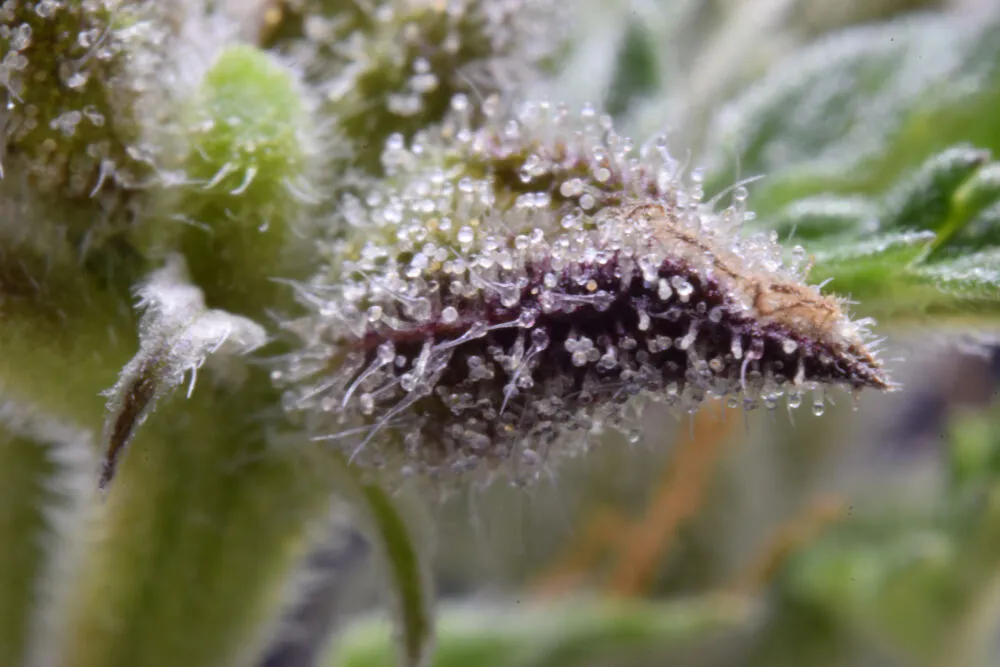
Calyxes are small, teardrop-shaped structures that form around the nodes of the plant and are most noticeable during the flowering stage. They act as a protective layer for the developing reproductive organs in female plants. As the plant transitions from vegetative to flowering stages, calyxes help guard the reproductive structures and buds from external threats like pests or environmental stress.
Flowers or Buds (female reproductive organ)
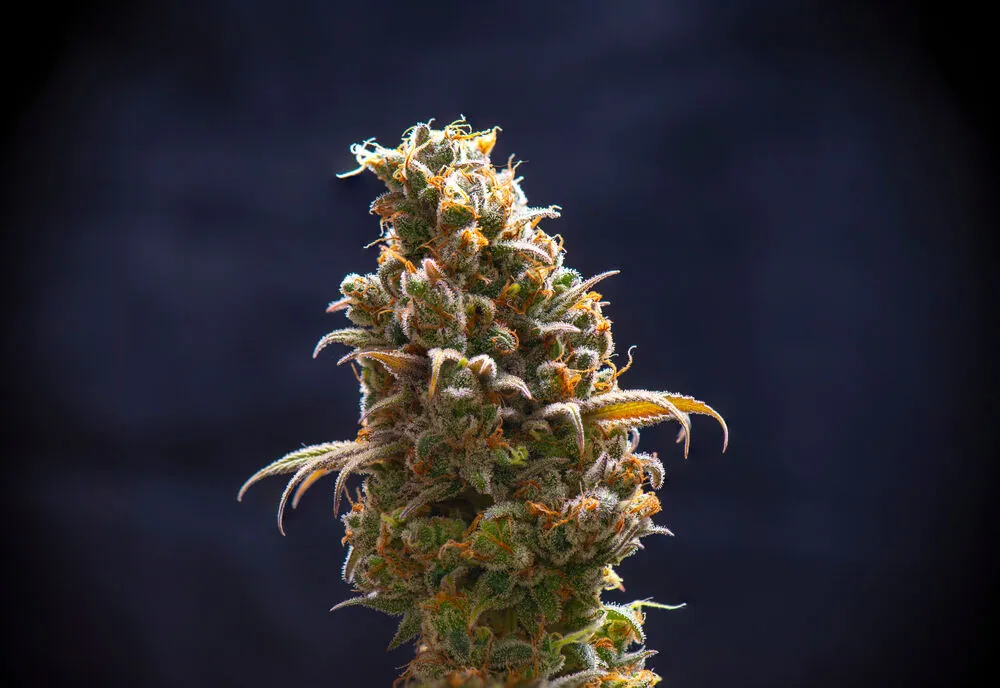
The flowers, or buds, of the cannabis plant are what most people think of when they refer to cannabis. Flowers only grow on female cannabis plants. This is where the highest concentrations of cannabinoids like THC and CBD are found. Buds are the reproductive organs of female cannabis plants and are harvested for consumption. The tightly packed clusters of calyxes, bracts, and trichomes make up the smokable or consumable part of the plant.
Pollen Sacks (male reproductive organ)
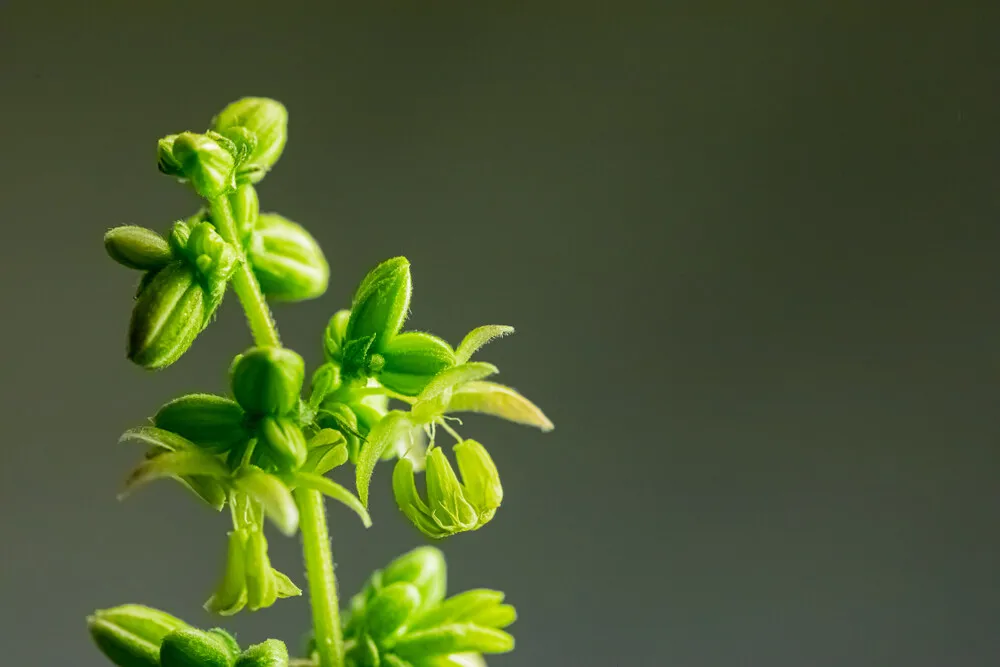
Pollen sacs are the male reproductive organs of a cannabis plant, found on male or hermaphroditic plants. These small, ball-shaped structures appear at the nodes, where stems meet branches. Their purpose is to produce and release pollen, which fertilizes female plants by landing on the stigmas, leading to seed production.
Stigmas & Pistils
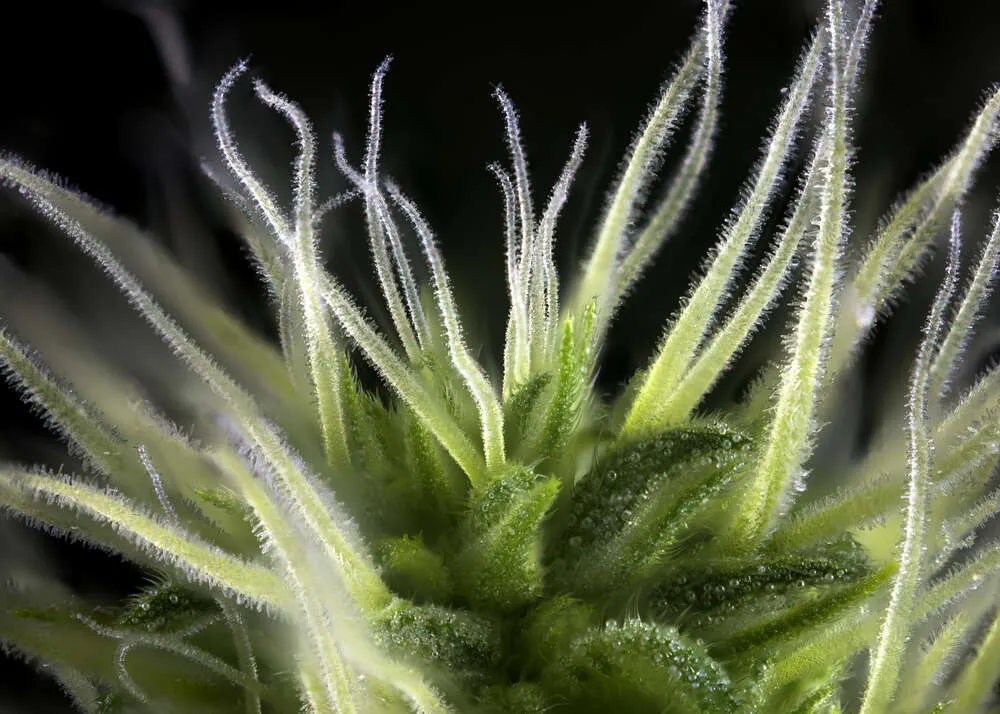
The stigmas are the hair-like structures that emerge from the pistils, which are the female reproductive organs of the cannabis plant. Initially white in color, stigmas eventually turn orange, red, or brown as the plant matures. These hairs play a crucial role in catching pollen from male plants, enabling fertilization. While stigmas contribute to the plant's reproduction, they do not contain high levels of cannabinoids and are not typically consumed.
Bracts
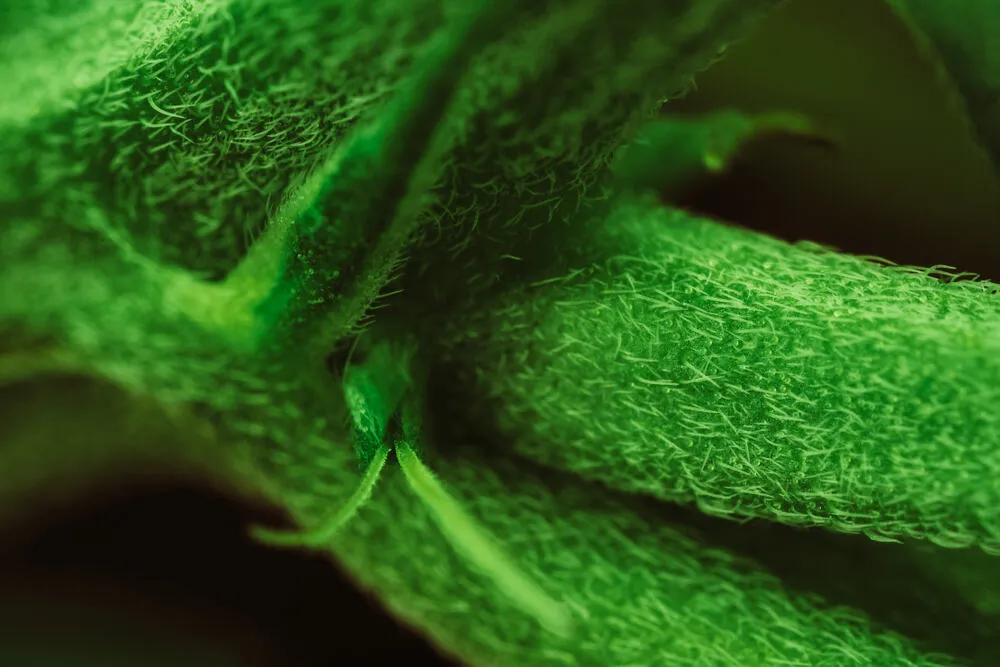
Bracts are found within the calyx and are the most cannabinoid-rich part of the female cannabis plant. These tear-shaped leaves are coated with resin glands, which are responsible for producing the sticky, cannabinoid-filled trichomes. Trichomes house compounds like THC and CBD, which make cannabis valuable for medicinal and recreational use. Bracts also protect the pistils, which are involved in pollination and seed production in female plants.
Trichomes
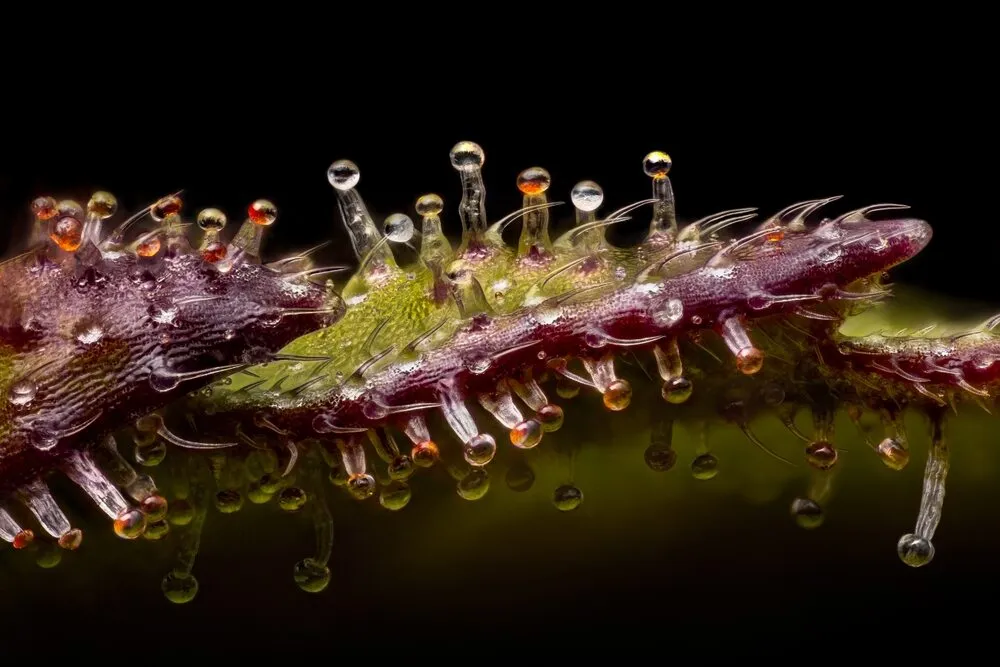
Trichomes are tiny, glandular structures that coat the surface of the buds, bracts, and even fan leaves. These resinous glands serve as a defense mechanism for the cannabis plant, protecting it from pests and environmental stressors by producing bitter-tasting or aromatic compounds. More importantly, trichomes are where the bulk of the plant's cannabinoids, terpenes, and flavonoids are produced. These compounds are responsible for the plant's psychoactive and medicinal properties. The trichome layer gives the buds a frosty, glittery appearance when mature, which is often used as an indicator of potency and harvest readiness.
Cannabinoids
Cannabinoids are the chemical compounds produced primarily in the trichomes of the cannabis plant. These include well-known cannabinoids like THC (tetrahydrocannabinol), which is responsible for the psychoactive effects of cannabis, and CBD (cannabidiol), which has various therapeutic benefits. Other cannabinoids like CBG (cannabigerol) and CBC (cannabichromene) also play roles in the plant's effects. Cannabinoids interact with the human body's endocannabinoid system to produce a wide range of physical and psychological effects.

How Cannabis Leaves Absorb Energy from the Sun
Cannabis leaves play a key role in the plant's ability to absorb light and convert it into energy through a process called photosynthesis. The large fan leaves are equipped with chlorophyll, a pigment that captures sunlight. This light energy is then used to transform carbon dioxide and water into sugars, which fuel the plant’s growth. Additionally, tiny pores called stomata on the surface of the leaves allow the plant to take in carbon dioxide while also releasing oxygen. This process not only provides energy but also helps regulate temperature and moisture levels in the plant.
How Roots and Stems Deliver Nutrients to the Flowers and Leaves
The roots and stems of a cannabis plant work together to transport water, nutrients, and minerals to the rest of the plant. After the roots absorb water and nutrients from the growing medium, they send these essentials upward through the stem via a tissue called the xylem. The nutrients and water then reach the leaves and flowers, helping them grow. At the same time, the stem also moves sugars created by photosynthesis down from the leaves to the rest of the plant, ensuring all parts have the energy they need to function.
How the Cannabis Stem Works to Support Your Plants
The stem is the main support structure of your cannabis plant. It helps the plant stand upright and holds up the branches, leaves, and buds. As the plant grows, the stem becomes stronger and thicker, allowing it to support the increasing weight of the plant, especially during the flowering stage when the buds become heavy. The stem also serves as a transport system, carrying water and nutrients from the roots to the rest of the plant, while distributing sugars produced in the leaves to the rest of the plant’s tissues.
How Trichomes and Cannabinoids Are Created and Stored
Trichomes are tiny, crystal-like structures on the surface of cannabis flowers, leaves, and stems. They serve as protective glands that produce and store cannabinoids like THC and CBD, along with aromatic compounds called terpenes. Trichomes begin to develop as the plant enters the flowering stage, and their production is triggered by environmental factors such as light exposure. Inside the trichomes, the plant synthesizes cannabinoids such as THC and CBD.
How a Cannabis Plant Produces and Stores Terpenes
Terpenes are aromatic compounds produced by cannabis plants that give them their unique smells and flavors. They are created in the same glandular trichomes where cannabinoids are produced. As the plant matures, especially during the flowering stage, trichomes develop on the surface of the buds, leaves, and stems, and this is where terpenes are synthesized.
Once produced, terpenes are stored within the resinous trichomes. These sticky glands help protect the terpenes from environmental factors such as pests and UV rays. Terpenes not only give cannabis its aroma but are also thought to work in synergy with cannabinoids to influence the overall effects and medicinal properties of the plant, a phenomenon known as the "entourage effect."

Now that you know about all the working parts of the cannabis plant, you can be more in tune with its overall growth, and life cycle. Each part of the marijuana plant's anatomy serves a unique purpose. Understanding these purposes can help you watch for any signs of irregular growth, and how to supplement for optimal health. To watch plant cannabis anatomy grow to its fullest, always begin with high-quality seeds. Like the premium collection at 420 Seeds that can be securely purchased, and discreetly delivered.










